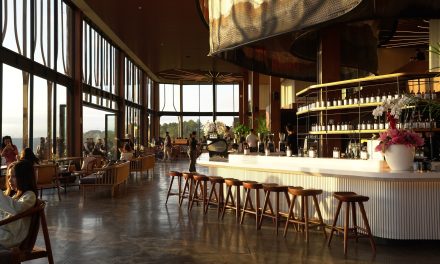When you think of Seminyak, Bali, the vibrant beach clubs, luxurious resorts, and trendy boutiques likely come to mind. While it can seem like a modern playground for the well-heeled, there are hidden gems nestled in the nooks and crannies of this enchanting area that reveal Bali’s rich history and culture. Join me as I explore some of these lesser-known historical sites in Seminyak, sharing personal anecdotes and insights along the way.
Discovering the Hidden Temples
During my first visit to Seminyak, I was captivated by the beauty of the sandy beaches and the lively atmosphere. One afternoon, I decided to wander off the beaten path, and that’s when I stumbled upon Pura Petitenget. Tucked away from the bustling streets, this temple is often overlooked by tourists seeking their next Instagram shot.
As I approached the temple, I was greeted by the mesmerizing sounds of traditional Balinese gamelan music. The temple’s intricate carvings and sacred atmosphere took my breath away. I learned that Pura Petitenget is one of the six main temples in Bali, dating back to the 15th century.
As you walk through the temple’s gates, you’re enveloped in the fragrant aroma of incense and frangipani flowers. I sat on a stone bench and observed a few local families engaged in a prayer ritual. It felt like I was witnessing a slice of daily life that many visitors miss.
Practical Tip:
If you plan to visit Pura Petitenget, try to go early in the morning or around sunset. The light is magical, and the temple looks stunning with a backdrop of the setting sun. Remember to dress respectfully—sarongs are often provided at the entrance.
The Enigmatic Museum Seminyak
Another intriguing spot is Museum Seminyak, a hidden gem that beautifully marries art and history. I stumbled upon it while searching for a quiet café to escape the heat. Nestled among luxury villas, this museum often flies under the radar.
Inside, you’ll find an impressive collection of contemporary art, but what’s fascinating is the way the art reflects the transformation of Balinese culture. I remember getting lost in a thought-provoking exhibit featuring local artists—many of whom draw inspiration from their own experiences growing up in Bali.
The museum staff was incredibly welcoming, and the curator took the time to share stories about the artists’ backgrounds. I left with a deeper understanding of how modern Balinese life intertwines with tradition.
Practical Tip:
Check their schedule for any workshops or events. They often hold discussions and artist showcases that can provide a richer understanding of the local culture and history.
The Story of Blanjong Temple
A short drive from the heart of Seminyak will take you to Blanjong Temple, one of the oldest temples on the Indonesian island of Bali. Although it’s located in the nearby area of Sanur, it’s very accessible for a quick trip. Here, I made another incredible discovery that brings together the past and present.
As I wandered through the temple grounds, I was struck by the Blanjong Pillar, an ancient stone inscription that hints at the island’s early Hindu influence. It felt surreal to stand before a relic that is over a thousand years old, and for a moment, I imagined what life must have been like during its prime.
While many tourists flock to the more famous temples, visiting Blanjong feels more intimate. You can often find local worshippers here, offering daily prayers, which adds to the temple’s serene atmosphere.
Practical Tip:
Pair your visit with a trip to a local warung for an authentic Balinese meal. The area is known for its delicious mie goreng (fried noodles) that you can savor while reflecting on the historical marvels you’ve just explored.
Engaging with the Local Community
One of the most rewarding aspects of discovering hidden historical sites in Seminyak is the opportunity to engage with local traditions. During my travels, I attended a gridiron ceremony at a nearby village. This ritual involves a series of cultural performances and offerings that depict the balance of life and death in Balinese spirituality.
Attending local ceremonies can be an eye-opening experience. While standing among locals, I felt a sense of belonging and connection. They shared stories and taught me the significance of various symbols. If you’re keen, make friends with locals or your hotel staff—many can guide you to ceremonies that are not widely advertised, making for unique and memorable experiences.
Practical Tip:
Be respectful and mindful while attending local events. These are significant occasions for the community, so dress appropriately and follow any customs or practices they have.
Conclusion
While Seminyak is well-known for its modern allure, there is a deeper layer of history that begs to be explored. From ancient temples like Pura Petitenget to art-infused spaces like Museum Seminyak, the hidden historical sites in Seminyak offer you a taste of Bali’s rich past that is often overshadowed by its contemporary scene. So next time you find yourself in Seminyak, take a moment to step beyond the glossy surface and dive into the history that lies beneath. Whether you seek spiritual connection, artistic inspiration, or simply the joy of exploring something new, these hidden treasures will enrich your journey in beautiful Bali. Happy exploring!






